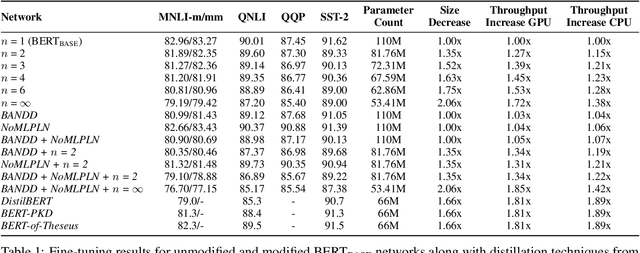TrimBERT: Tailoring BERT for Trade-offs
Paper and Code
Feb 24, 2022



Models based on BERT have been extremely successful in solving a variety of natural language processing (NLP) tasks. Unfortunately, many of these large models require a great deal of computational resources and/or time for pre-training and fine-tuning which limits wider adoptability. While self-attention layers have been well-studied, a strong justification for inclusion of the intermediate layers which follow them remains missing in the literature. In this work, we show that reducing the number of intermediate layers in BERT-Base results in minimal fine-tuning accuracy loss of downstream tasks while significantly decreasing model size and training time. We further mitigate two key bottlenecks, by replacing all softmax operations in the self-attention layers with a computationally simpler alternative and removing half of all layernorm operations. This further decreases the training time while maintaining a high level of fine-tuning accuracy.
 Add to Chrome
Add to Chrome Add to Firefox
Add to Firefox Add to Edge
Add to Edge